If you've picked up the latest version of Reason (that being Reason 6) and you spent even a few moments with some of the new effects, you're probably an addict already. The effects I'm referring to are:
- The Echo
- The Pulveriser
- The Alligator
Now, I'm not about to take anything away from these effects at all, they are truly brilliant and bring something new to the table. They are designed with a higher level of realtime tweaking in mind, especially where the Echo is concerned. The Roll mode, for example, takes the usage of echo/delay to a whole new level, because suddenly you can interact with the Echo device and have it make completely new beats, rhythm variations, and more. Tons of fun, right?
As you move forward with these new devices, I would encourage you not to forget about some of the older devices, especially the RV-7000. In actuality, the RV-7000 can be just as functional as the Echo. This isn't readily apparent because of the way the RV-7000 is laid out. The Echo is laid out in a more vintage analog style. Each knob only does one thing, and it will only ever do that one thing. The RV-7000 is another story: It's made to resemble a more modern digital effects unit, similar to the Lexicon reverbs of the 80s. The Echo is a little more 70s style, if you catch my drift.
Bottom line: The RV-7000 is a victim of its own complexity.
However, if you combine the RV-7000 with a Combinator, suddenly you have all of those analog-style knobs that can be routed to functions that aren't even readily available on the RV-7000. Let me show you what I'm talking about.
Step 1 - Combine the RV-7000
Let's do a simple exercise: In an empty Reason session (this means nothing in the rack, nothing in the sequencer), create a Dr. Octo Rex and an RV7000:
After you create the RV7000, you will notice that it still has the blue outline around it, indicating that it's selected:
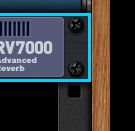
With only the RV7000 selected, right-click and choose Combine:
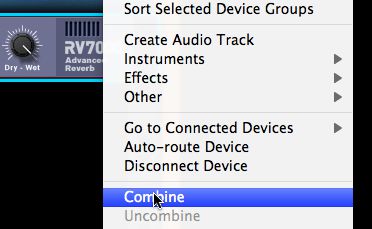
Now, your RV7000 (and only your RV7000) has been 'combined' into a Combinator. If you press the Tab key, you'll also notice that your Dr. Octo Rex is still routed in to the FX inputs of your RV7000, through the Combinator:
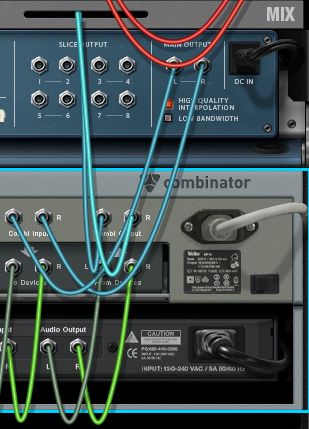
Step 2 - Explore the RV7000 through the Combinator!
Now, press Tab again and open up the Combinator programmer.
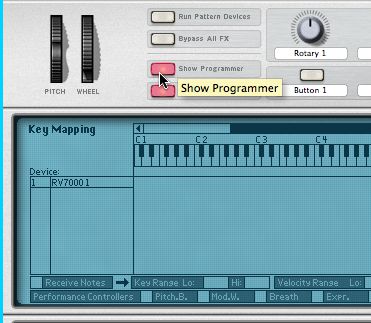
Select the RV7000 in the Device list, and then select Knob 1's Target list drop-down menu:
You would have to be blind or inexperienced not to notice that the RV7000 has a very large list of options for button and rotary control. What's even more interesting are the different types of control options that are available: Room, Hall, Arena, Echo, Reverse... The RV7000 is just a reverb, isn't it?
Quite the contrary! Like many of the Reverbs created in the 80s and 90s, the RV7000 holds several different algorithms, or effects types. Now, what is misleading with this list is that it makes you think that all of the effects can be controlled within the RV7000 individually. This is not true!
However, you do get a lot more knob control over each individual effect type; you can even assign a knob to change effects types. Try this with a controller!
For example: In the drop-down menu go under the sub-category of Master. You'll notice that Algorithm is here as an option. Select it, and this will assign it to Knob 1.
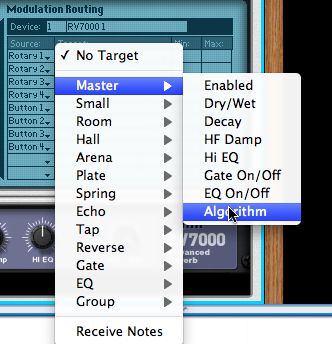
Now, if you run the RV7000 you can use the Combinator knob to scroll through effects types on the fly (very fun, actually). It's a very cool building block for some major effects Combinators especially if you're employing a hardware controller.
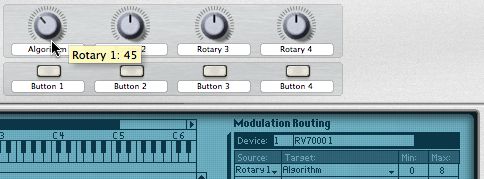
Finally, select the target list for Knob 2, and look under the Tap section, which controls the Multi-tap delay of the RV7000. You'll notice that you can actually assign each individual Tap timing to individual buttons and knobs. This means you can change up multiple delay timings in the fly! A very cool feature... again, especially if you use hardware controllers.
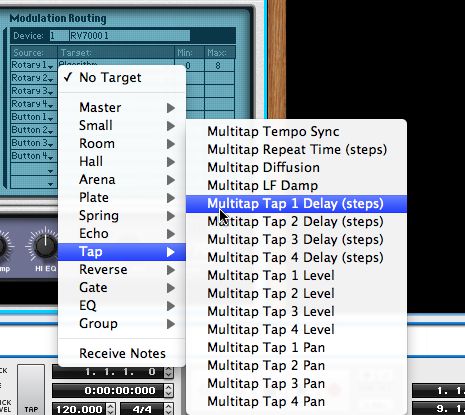
Note: The word "steps" next to some of the Tap sub-menus indicates that you have to be in Tempo sync in order for it to work.


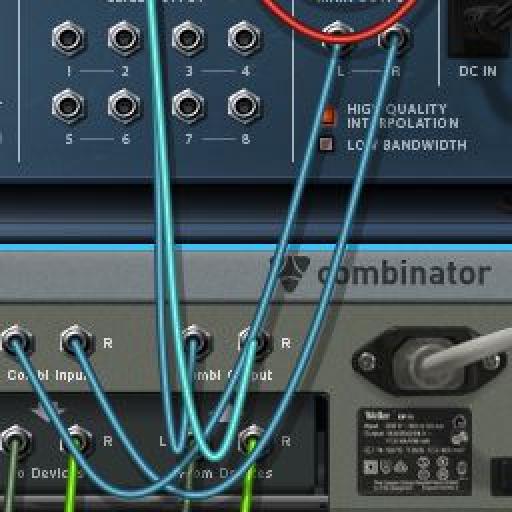

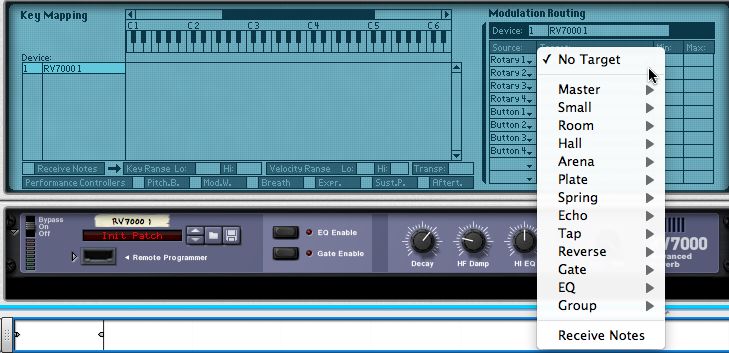
 © 2024 Ask.Audio
A NonLinear Educating Company
© 2024 Ask.Audio
A NonLinear Educating Company
Discussion
Want to join the discussion?
Create an account or login to get started!